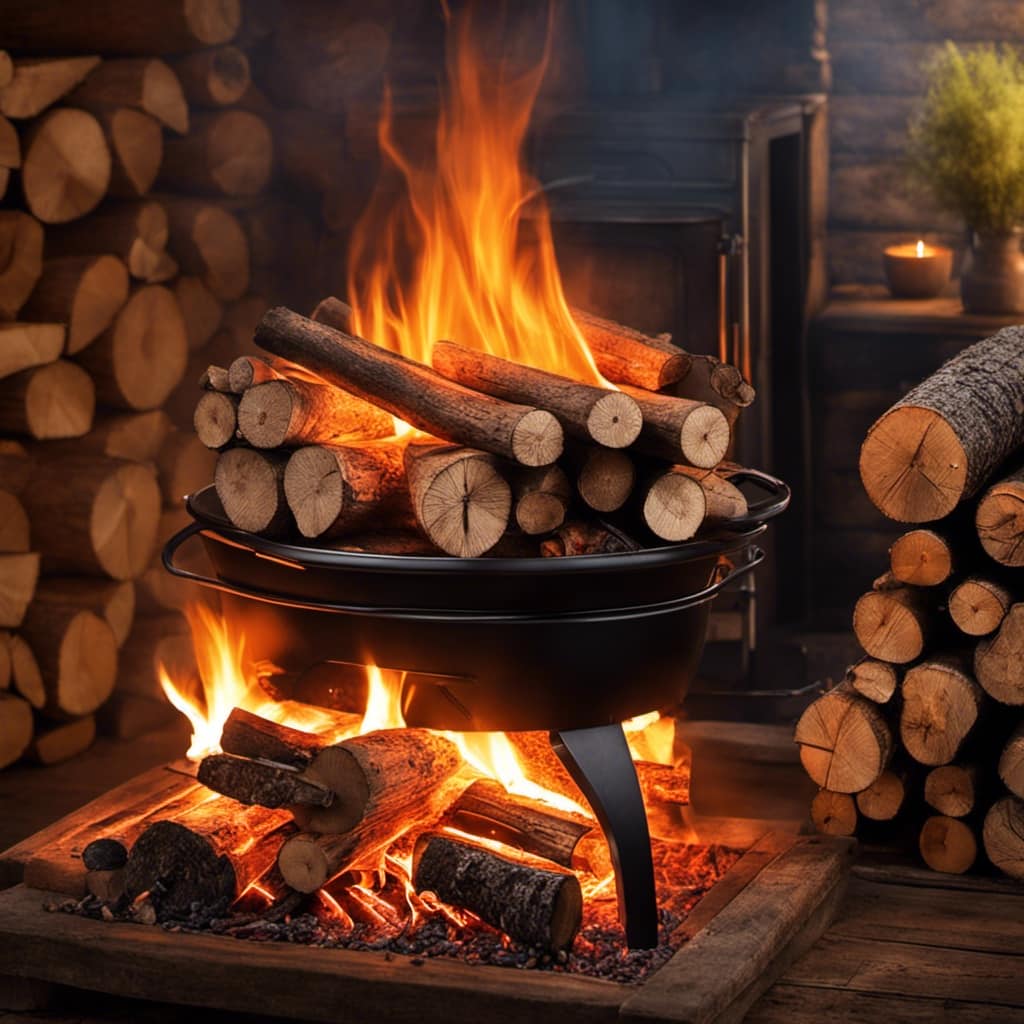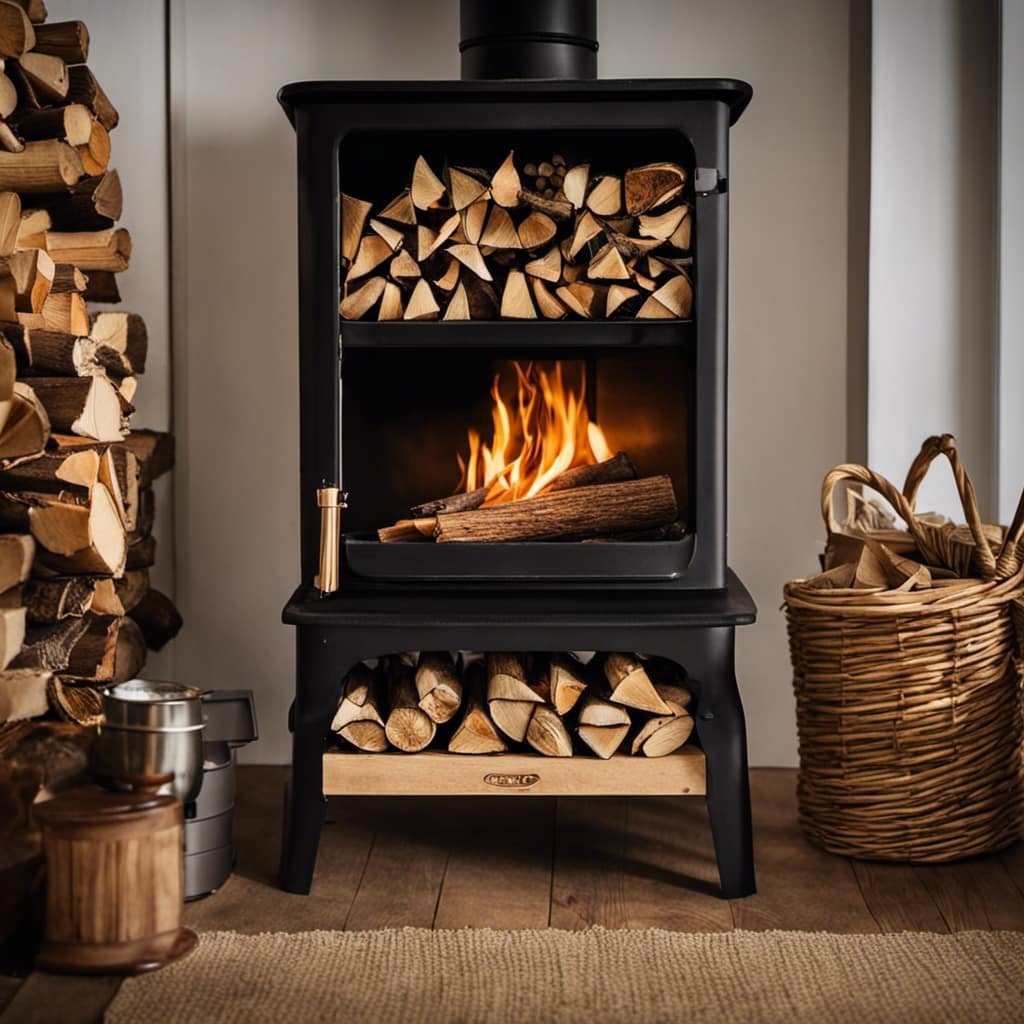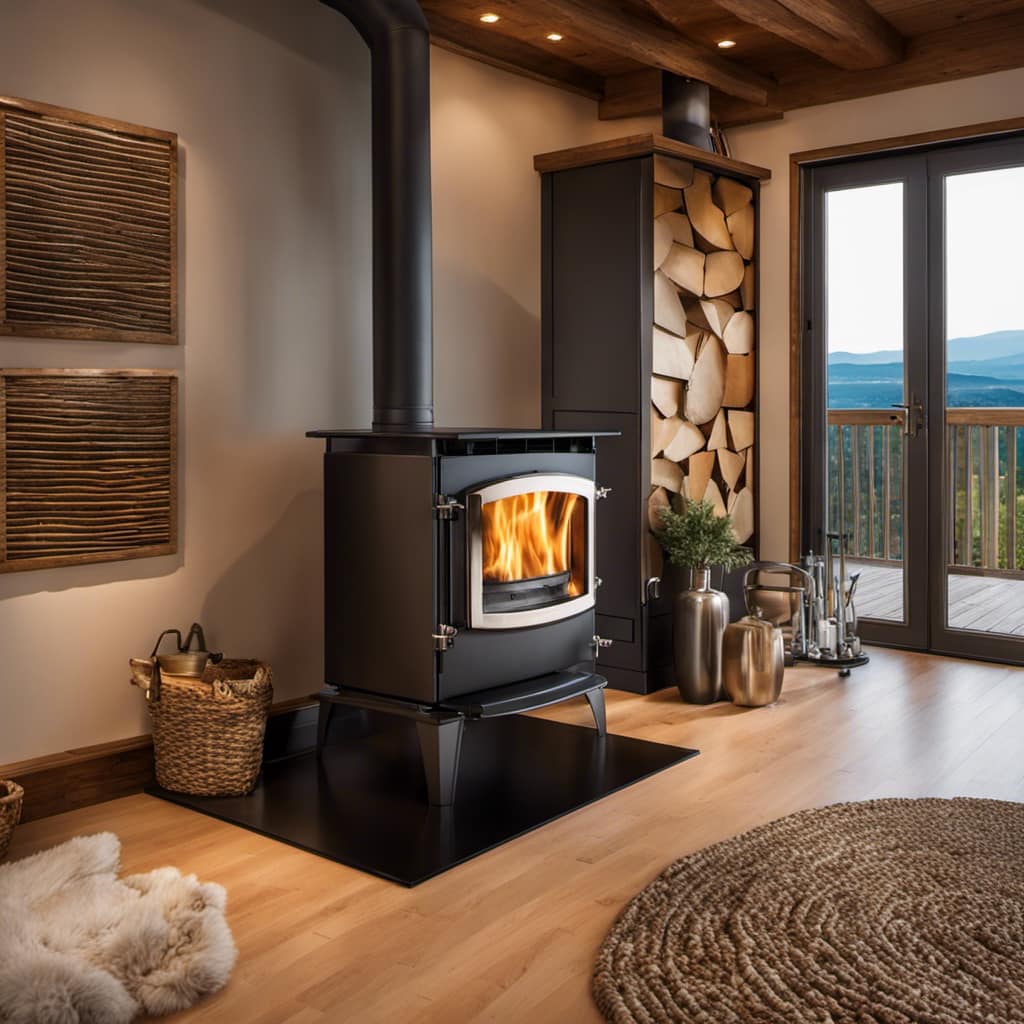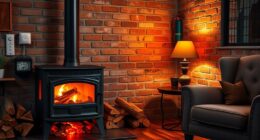
Have you ever had the unpleasant experience of breaking the glass on your wood stove? I have, and it’s quite a nuisance.
But fear not, because I’ve got you covered with this detailed guide on how to repair it yourself.
From assessing the damage to installing the new glass, I’ll walk you through each step.
So grab your tools and let’s get started on restoring your wood stove to its former glory.

Key Takeaways
- Inspect the glass to determine the extent of the damage
- Gather the necessary tools, including safety goggles and work gloves
- Carefully remove the broken glass, taking safety precautions
- Clean the frame before installing the new glass and allow the adhesive to dry completely before using the wood stove
Assess the Damage
I’ll take a look at the damage and see if it’s repairable. First, I’ll carefully inspect the glass to assess the extent of the damage. If it’s only a small crack or chip, it may be possible to repair it. However, if the glass is shattered or heavily damaged, it will likely need to be replaced entirely.
When it comes to repairing broken wood stove glass, it’s important to follow proper repair techniques and safety precautions. Safety is paramount during this process, so I’ll make sure to wear protective gloves and eyewear. Additionally, I’ll ensure that the stove is completely cool before attempting any repairs.
Gather the Necessary Tools
Before starting the repair process, it’s important to gather all the necessary tools and materials. Here are the essential items you’ll need:
- Safety goggles: Protect your eyes from flying glass shards.
- Work gloves: Shield your hands from sharp edges and potential cuts.
- Screwdriver: Use it to remove any screws holding the glass in place.
- Putty knife: Aid in prying out the broken glass without causing further damage.
- Replacement glass: Ensure you have the correct size and type for your wood stove.
Safety precautions must be taken to avoid accidents. Always wear protective gear and handle broken glass with caution. Common mistakes include not wearing gloves, which can result in injuries, and using the wrong tools, which may cause damage to the stove or new glass.

Now that you have gathered the necessary tools, let’s move on to the next step: removing the broken glass.
Remove the Broken Glass
I have carefully removed the broken glass from the wood stove using a putty knife.
When dealing with broken glass in a wood stove, it’s important to take safety precautions to prevent any injuries. Before beginning the process, make sure to wear protective gloves and safety glasses to protect yourself.
Start by gently scraping away any remaining glass fragments using a putty knife. Be cautious not to damage the surrounding wood or gasket.

Once the glass is completely removed, clean the area thoroughly to ensure there are no sharp edges or debris left behind.
Now, you can proceed with replacing the glass by following the manufacturer’s instructions. Remember to handle the new glass with care and always prioritize safety throughout the entire process.
Install the New Glass
To install the new glass for your wood stove, follow these important steps:
-
Clean the Frame: Before installing the new glass, thoroughly clean the frame to remove any debris or old adhesive. This will ensure a proper seal and prevent air leaks.

-
Apply Adhesive: Use a high-temperature adhesive or gasket sealant to coat the frame. This will provide insulation and help create an airtight seal.
-
Position the Glass: Carefully place the new glass onto the frame, ensuring that it is aligned correctly and centered.
-
Secure the Glass: Gently press the glass into place, applying even pressure around the edges to ensure a secure fit.
-
Allow Time to Dry: Give the adhesive or sealant enough time to dry completely before using the wood stove.

Remember to always follow safety precautions when working with a wood stove, such as wearing protective gloves and eyewear to avoid injury.
Clean and Maintain the Wood Stove Glass
While carefully wiping the wood stove glass, I noticed a buildup of soot and residue that needed to be cleaned. As an avid wood stove user, I understand the importance of maintaining the glass to prevent discoloration and ensure optimal performance. To effectively remove soot buildup, there are a few key steps to follow. First, gather the necessary supplies: a soft cloth, glass cleaner, and a scraper or razor blade. Next, make sure the stove is cool to the touch before starting the cleaning process. Begin by spraying the glass cleaner onto the cloth, avoiding direct contact with the stove. Gently wipe the glass in a circular motion, applying light pressure to remove the soot and residue. If there are stubborn stains, carefully use the scraper or razor blade to scrape them off. Finally, wipe the glass with a clean, dry cloth to remove any remaining cleaner and achieve a streak-free shine. By regularly cleaning the wood stove glass, you can prevent discoloration and ensure a clear view of the fire, allowing for a more enjoyable and efficient heating experience.
| Steps to Remove Soot Buildup Effectively |
|---|
| 1. Gather necessary supplies: soft cloth, glass cleaner, scraper or razor blade |
| 2. Ensure stove is cool to the touch |
| 3. Spray glass cleaner onto cloth, avoiding direct contact with stove |
| 4. Gently wipe glass in circular motion, applying light pressure |
| 5. Use scraper or razor blade for stubborn stains |
| 6. Wipe glass with clean, dry cloth for streak-free shine |
Frequently Asked Questions
Can I Use Regular Glass to Replace the Broken Glass in My Wood Stove?
Yes, you can use regular glass to replace the broken glass in your wood stove. However, it is important to take safety precautions and consider alternative glass options that are more heat-resistant and designed specifically for wood stoves.
How Long Does It Take to Install the New Glass in a Wood Stove?
Installing new glass in a wood stove is a breeze. The installation time varies depending on the stove model and the quality of the glass. But don’t worry, it won’t take forever!

Is It Necessary to Hire a Professional to Remove and Install the Glass in a Wood Stove?
Hiring a professional for wood stove glass removal and installation has pros and cons. DIY can save money, but mistakes can be costly. Common mistakes to avoid include improper sealing and mishandling the glass.
Can I Use Any Type of Cleaner to Clean the Wood Stove Glass?
I can use specific cleaners to clean wood stove glass. It’s important to choose the right type to avoid damaging the glass. Using proper cleaning techniques, I can keep my wood stove glass looking clean and clear.
Can I Still Use My Wood Stove While Waiting for the New Glass to Arrive?
Yes, I can use my wood stove without the glass, but it’s important to take safety precautions. I’ll need to ensure proper ventilation, monitor the fire closely, and keep children and pets away.
Conclusion
In conclusion, repairing broken wood stove glass is a straightforward process that can be done with the right tools and a little bit of patience. It’s important to assess the damage, gather the necessary tools, remove the broken glass, install the new glass, and properly clean and maintain the wood stove glass.

Did you know that every year, over 2,500 house fires are caused by faulty wood stoves? Taking the time to repair broken glass can help prevent potential accidents and ensure the safety of your home.
Growing up surrounded by the vast beauty of nature, Sierra was always drawn to the call of the wild. While others sought the comfort of the familiar, she ventured out, embracing the unpredictable and finding stories in the heartbeat of nature.
At the epicenter of every remarkable venture lies a dynamic team—a fusion of diverse talents, visions, and passions. The essence of Best Small Wood Stoves is crafted and refined by such a trio: Sierra, Logan, and Terra. Their collective expertise has transformed the platform into a leading authority on small wood stoves, radiating warmth and knowledge in equal measure.










